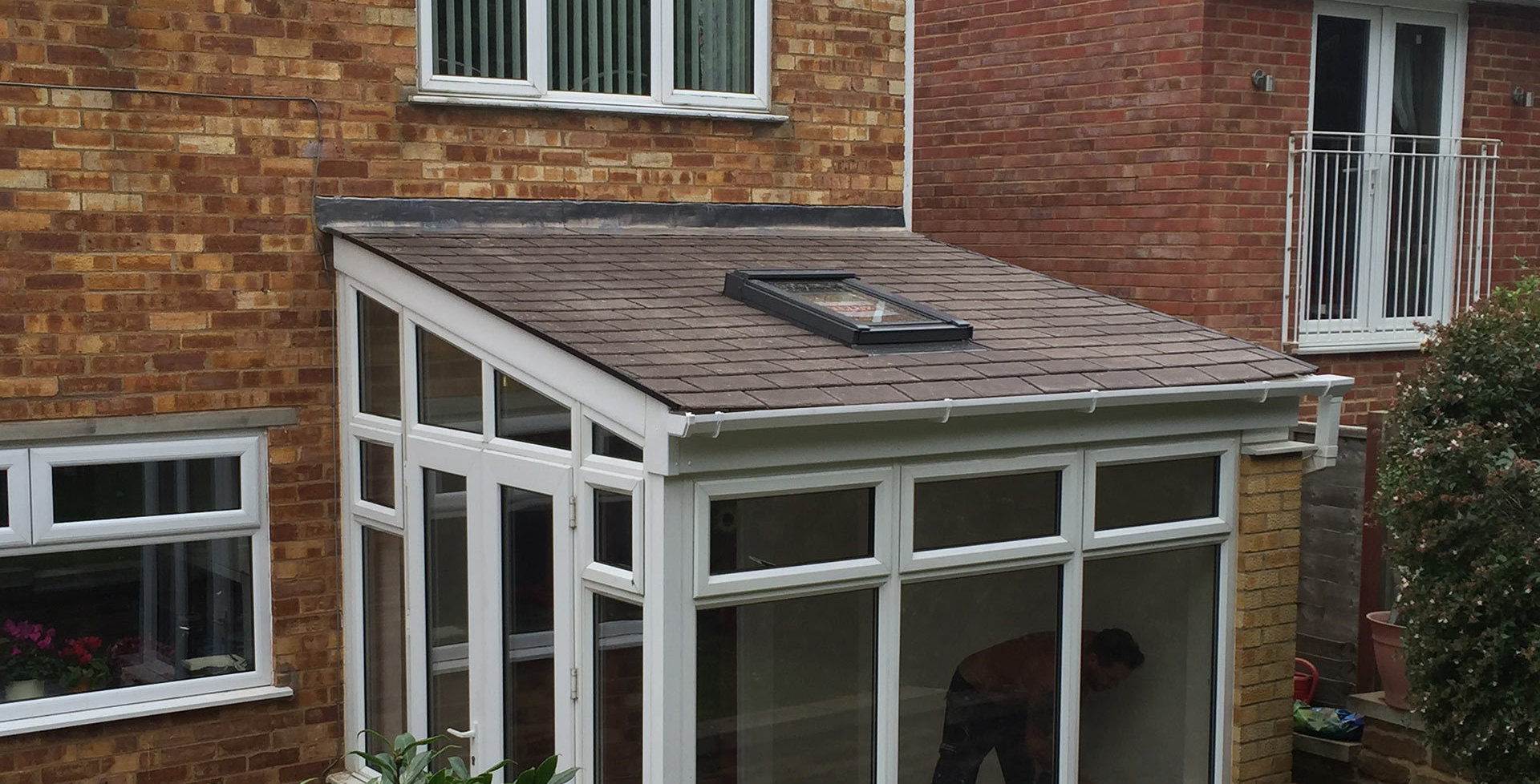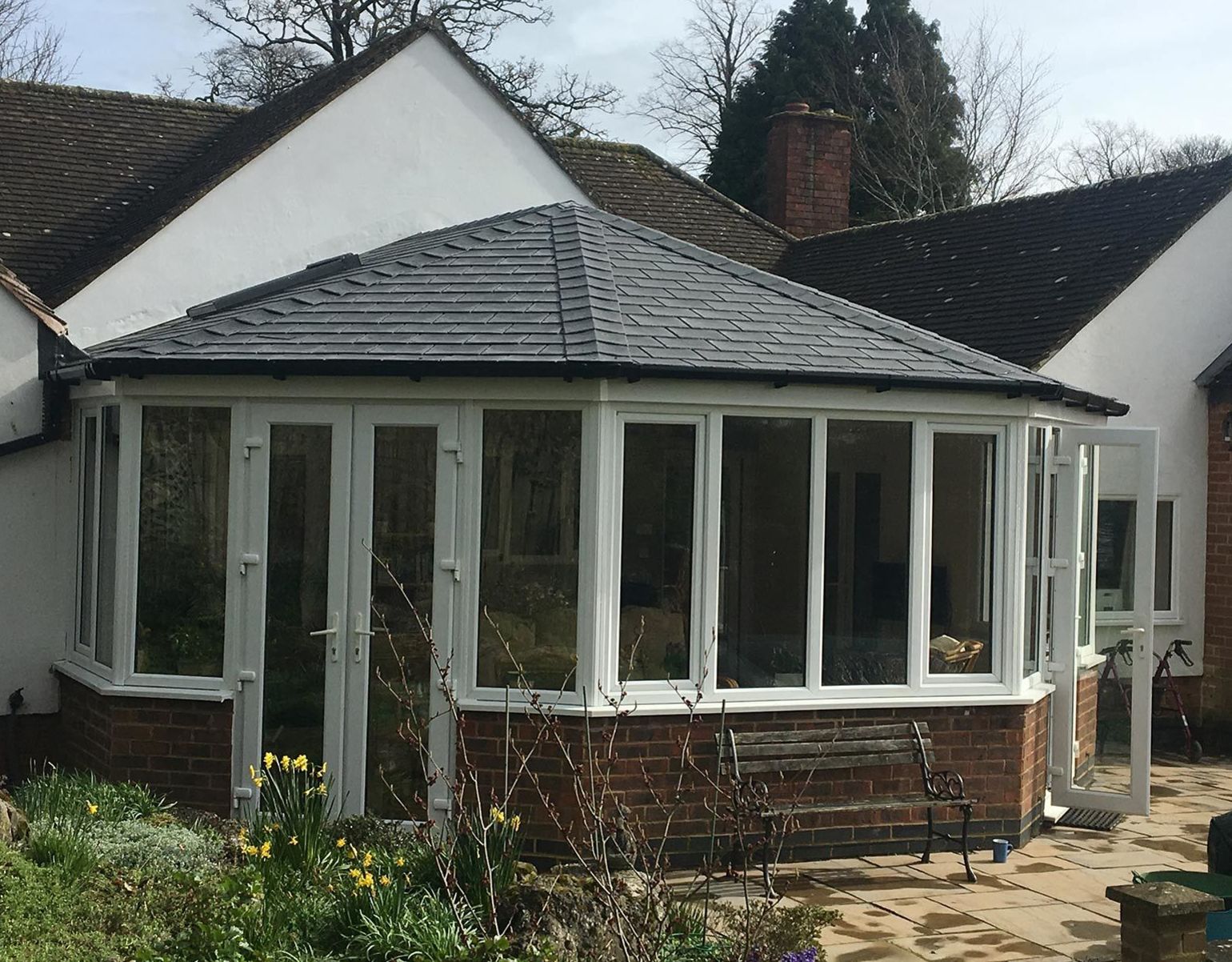Roofing a Conservatory
Posted on 10th March 2020 at 18:23

Roofing a Conservatory
What are the benefits of replacing your conservatory roof?
This blog discusses the different u-values for conservatory roofs.
One of the biggest benefits of a solid tile conservatory roof is improved energy efficiency. Most conservatories are built with either a polycarbonate roof or a glass roof. As both materials are translucent it does mean that it lets the sun in, which means in the summer, you can find that your conservatory is too hot to use. You also find that in the winter due to their u-values it can be expensive keeping your conservatory warm enough to use.
What does u-value mean?
U-Value means the amount of heat transmission through the material of a building. The lower the u-value the greater the energy efficiency, as the less heat can penetrate the building fabric. So, for a conservatory the u-value of the conservatory roof material, will determine how much heat can penetrate through the roof. Either outwards in the winter or inwards in the summer.
They are calculated as a measurement of the amount of heat lost in Kilowatts, through one square metre of glass per hour.
U-Values for Conservatory Roofs
Roofing a Conservatory with a Polycarbonate Roof
A polycarbonate roof has the highest u-value and is does depend on the thickness of the polycarbonate sheets and how many walls. The u-value will range between 1.5w/m2 and 2.4w/m2.

Roofing a Conservatory with a Glass Roof
A glass conservatory roof is the middle as far as u-values for a conservatory roof are concerned. Again, the value will vary depending on what glass you have installed, whether it is double or triple glazed and also whether the cavity is filled with argon gas, Xenon gas or Krypton gas. The best type of glass to have on a conservatory roof is one with a low-e coating, which is a heat reflective glass, which can also be referred to as Energy Efficient Glass. It has a special coating on one side which allows the sun to pass through the glass into the conservatory while reducing the heat loss outside.
Although a glass conservatory roof that is fitted with triple glazing, multiple low-e coatings and either Krypton or Xenon gas can achieve a u-value of 0.4w/m2, it is very expensive, in fact more expensive than a solid conservatory roof.
A glass roof that has not been filled with gas will achieve a u-value of between 2.2w/m2 to 3w/m2k depending on whether it is double or triple glazed. A roof that has a low-e coating can range between 0.8w/m2 and 1.7w/m2, which is an improvement on a polycarbonate roof.

Roofing a Conservatory with a Solid or Tiled Roof
These are the most energy efficient conservatory roofs and usually have a u-value of between 0.16w/m2 to 0.18w/m2, which outperforms both a polycarbonate and a glass conservatory roof for energy efficiency.

To also put the u-values into perspective, the roof on a new extension needs to achieve a u-value of between 0.16w/m2 and 0.18w/m2 depending on where the reading is taken.
The reason that we can achieve a u-value if between 0.16 and 0.18 is due to the three layers of insulation that is fitted within the conservatory roof. There are two layers of insulation within the roof structure and then we install insulated plasterboard to the inside, which is skimmed to a smooth finish.
If you would like to read more about roofing a conservatory with a solid roof.
If you would like to receive a no obligation quote, please call us on 01604 947146 or complete our short contact form.
Tagged as: Conservatory Roof
Share this post:



